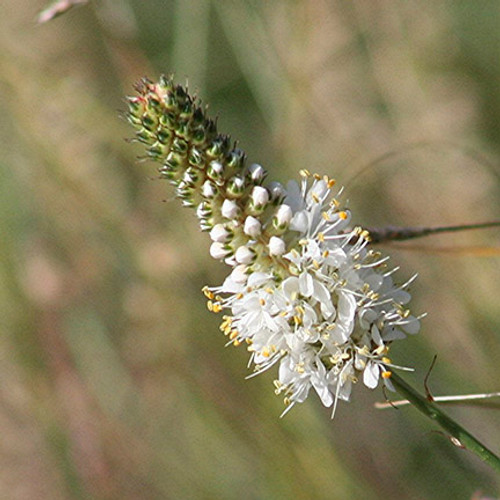Sold by the PLS pound
Prairie sandreed is a tall, coarse, stemmy, open, sod forming grass found on sandy soil sites in typically low precipitation zones. Its coarsely fibrous root system augmented by scaly, spreading rhizomes produces an effective sand binding species. Its culms are 3 to 5 feet tall, arising singularly and are attached to its stout spreading rhizomes. It flowers from August to September and like most grasses is wind pollinated.
Uses
Grazing/rangeland/hayland: Prairie sandreed is a native, sod forming, warm-season grass commonly found on sandy rangeland sites throughout the Central and Northern Plains. This grass species is considered a key species in grazing programs because of its abundance, yield potential and distribution of forage production during the growing season. Prairie sandreed begins growth earlier in the spring than most other warm-season grass species, thus it provides forage for early livestock grazing.
Wildlife Value: Prairie sandreed provides fair forage for grazing and browsing wildlife in early spring and summer. The plants forage value increases in importance in late fall and winter as the plant cures well on the stem and provides upright and accessible forage. Seeds are used by songbirds and small rodents.
Erosion Control: The rhizomatous growth habit and extensive fibrous root system of this species makes it an excellent stabilizer of sandy sites.
Establishment
Seed should be planted at a depth of 1 inch on coarse textured soils and ½ inch or less on medium to fine textured soils. Seedbed preparation should provide a weed free, firm surface on which to plant. Seedling vigor of this species is only fair and stands develop rather slowly. Seeding rate will vary by region and may be influenced by degree of processing provided by the seed vendor. Some seed vendors process the seed to the bare caryopsis level. This will influence the seeding rate that is utilized.
Management
Forage production of ND-95 at Pierre, SD was reported at 5,279 pounds per acre. June and August defoliations of prairie sandreed produced the greatest forage yields over a three year period. Generally concentrations of crude protein decreased with increased maturity of the forage. Dry matter digestibility also declined with advanced maturity of the plant. Prairie sandreed responds positively to early spring burns.
Information from USDA NRCS Prairie Sandreed Plant Guide










